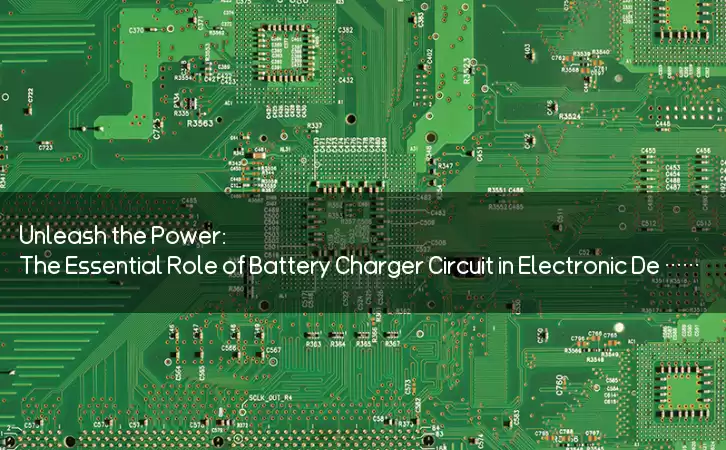Information Center
Unleash the Power: The Essential Role of Battery Charger Circuit in Electronic Devices
Published:2023-08-15 20:34:09 Author:Green WCND Views:72A battery charger circuit is an essential component of any electronic device that relies on rechargeable batteries. Whether it’s a smartphone, tablet, or laptop, without a working battery charger circuit, the device cannot function as intended.

There are two main types of battery charger circuits: linear and switching. Linear battery charger circuits are simpler and less expensive than switching circuits, but they are less efficient and generate more heat. Switching circuits, on the other hand, are more complex and expensive, but they are more efficient and generate less heat.

The basic function of a battery charger circuit is to provide power to recharge a battery. The circuit typically consists of a power source, a voltage regulator, a charging controller, and a battery. The power source can be either AC or DC, depending on the device and the battery being charged.
The voltage regulator is an essential part of the circuit as it produces a stable voltage that is safe for the battery. When charging a lithium-ion battery, for example, the voltage regulator must ensure that the voltage stays within a safe range to prevent damage to the battery.
The charging controller is responsible for managing the charging process. It regulates the flow of current to the battery to prevent overcharging or undercharging, which can also damage the battery. The charging controller may use different charging modes, such as constant current, constant voltage, or pulse charging, depending on the type of battery being charged.
One of the most critical components of a battery charger circuit is the battery itself. Different types of batteries have different charging requirements, and the charging circuit must be designed accordingly. For example, a lead-acid battery requires a different charging voltage and current than a lithium-ion battery.
The design of a battery charger circuit also depends on the desired charging time. Fast charging circuits typically provide a higher current to the battery, which can shorten the charging time but may also generate more heat. Slow charging circuits, on the other hand, provide a lower current to the battery, which can prolong the battery life but may take longer to charge the battery.
In conclusion, a battery charger circuit is a critical component of any electronic device that relies on rechargeable batteries. The circuit must be designed to provide a stable voltage, manage the charging process, and meet the charging requirements of the battery. With the right design and components, a battery charger circuit can ensure that the device’s battery is charged safely and efficiently, allowing the device to function as intended.
Power Adapter Design and Customization Guide for Portable Electric KettlesI. Common Design Types for Portable Electric Kettle Power AdaptersPortable electric ke···
I. Common Design Types of Power Adapters External Independent Type (Most Common) Design: A standalone adapter (e.g., "black brick") connected to the p···
Handheld Vacuum Cleaner Power Adapter Selection GuideIntroductionHandheld vacuum cleaners have become a mainstream tool for household cleaning due to their port···
Drill Power Adapter Selection Guide.drill-container { font-family: Arial, sans-serif; line-height: 1.6; max-width: 800px; margin: 0 auto; padding: 20px; } .dril···





